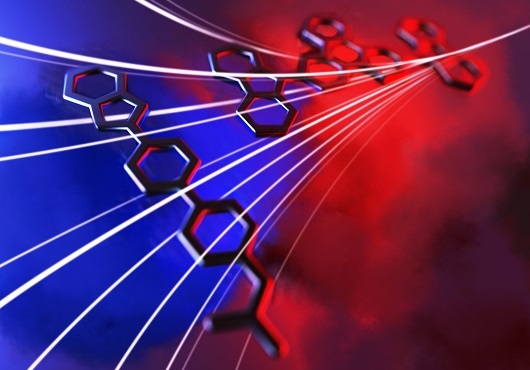Catching the sun

Sunlight is our most abundant source of renewable energy, and learning how best to harvest this radiation holds the key to meeting the world’s future power needs.
For solar energy to become a viable alternative to fossil fuels, solar cells need to be both inexpensive to manufacture and efficient in terms of energy they collect. Now a Scottish-led team have taken a major step towards this goal by using quantum mechanics to design molecular solar cells to be more efficient.
The researchers from Heriot Watt, Oxford, Harvard and St Andrews universities have been looking at organic solar cells, which use organic polymers that are inexpensive to produce. However, they are relatively inefficient – throwing away around 90% of the power they absorb.
The team has found a way to use interference between the excited states of molecules to stop them re-emitting sunlight, thereby wasting already absorbed energy. This disproves the assumption that absorption and emission of light by molecules must always go hand-in-hand, limiting how efficient solar cells can be.
The breakthrough, published in Physical Review Letters, centres on the discovery that asymmetric structures can outperform identical molecules ensuring more sunlight is converted into electrical energy. This has allowed the team to identify literally thousands of possible pairs of coupled molecules that could be used to improve solar cell operation.
Dr Brendon Lovett, of the School of Physics and Astronomy at the University of St Andrews, explains: “Quantum mechanics can be used to help improve the performance of solar cells – and we have shown that the effect could be harnessed in many different device designs. We are not limited to very specialised choices of material. This really simplifies how to build a quantum-enhanced solar cell, and hopefully we will see one being made in the next few years.”
Dr Erik Gauger, of the Institute of Photonics and Quantum Sciences at Heriot-Watt University, adds: “What really surprised us is that embracing the imperfections that distinguish realistic molecules from theoretical toy models can lead to better-performing designs. Whilst we understand the physics behind that now, at the outset of the study we expected exactly the opposite.”
The results are important because they offer the prospect of cheap and efficient solar cells of a conformable type that could be worn on the body or even painted onto windows.
The team hope to see a quantum-enhanced solar cell being made in the next few years.
Notes to news editors
Image shows how the light comes into a device and is moved through a pair of molecules.
The research paper, Photocell Optimization Using Dark State Protection, is available to view via Physical Review Letters.
Dr Brendon Lovett is available for interview. Please contact the University of St Andrews Press Office on 01334 462530 or email [email protected].
Category Research